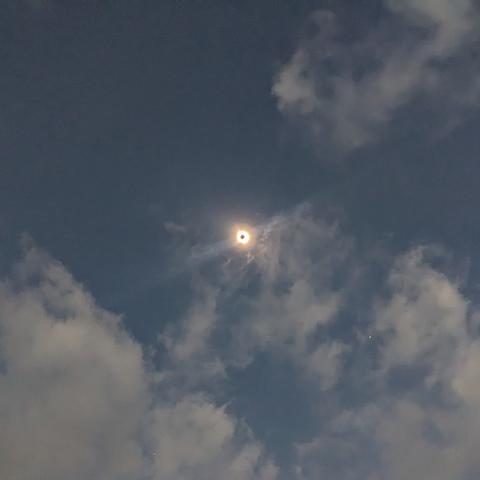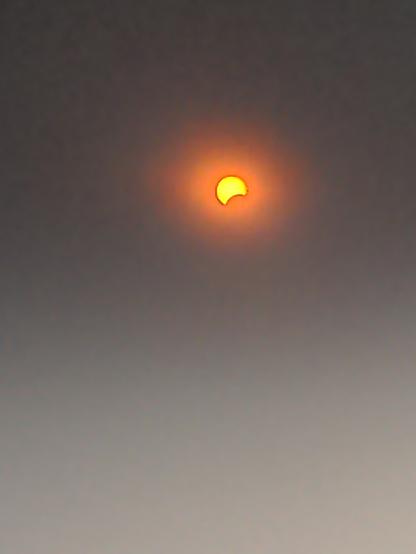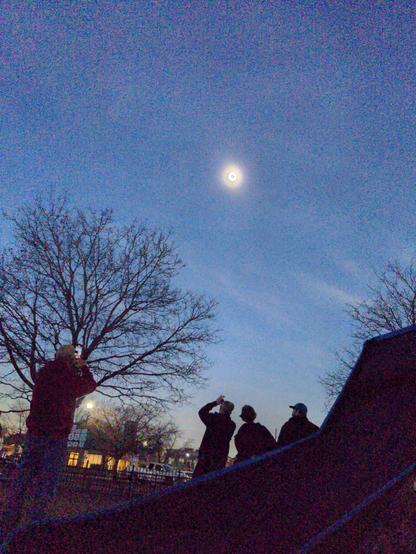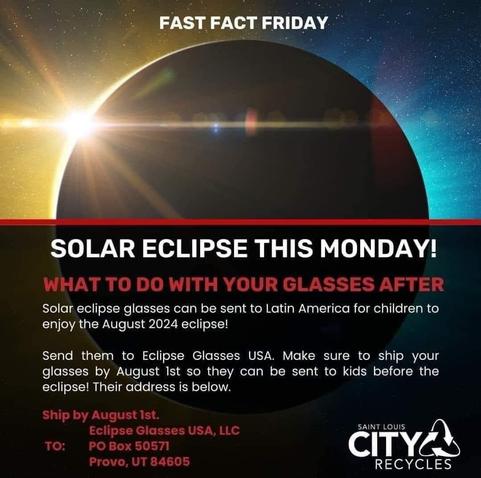Photographer Shoots Double Exposure Eclipse Photos on 35mm Film https://petapixel.com/2024/05/07/photographer-shoots-double-exposure-eclipse-photos-on-35mm-film/ #totalsolareclipse #filmphotography #doubleexposure #doubleexpose #solareclipse #2024eclipse #Spotlight #cinestill #Features #Analog
#2024Eclipse
Hey everyone, I finally have something cut together to show from the eclipse. I am very happy with what I captured and can’t wait to show it off. Just so you know, the time in Totality is almost realtime, with about 10 seconds trimmed out where it was behind clouds.
The Faces of the Eclipse From the Streets of New York City https://petapixel.com/2024/04/11/the-faces-of-the-eclipse-from-the-streets-of-new-york-city/ #portraitphotography #streetphotography #totalsolareclipse #2024solareclipse #solareclipse #2024eclipse #Spotlight #Features #eclipse #Space
Here’s a quick Timelapse of the eclipse at 8x speed. I’m pretty stoked with what I got. I can’t wait to color correct the footage. :)
DALLAS
I thought I’d seen enough pictures of a total solar eclipse to guess what it might feel like to see one with my own eyes. But then I got out of bed at 5:30 a.m. Monday to fly to DFW and witness that afternoon’s eclipse with a friend who lives northwest of the city—and that revealed how awestruck I could be left watching celestial mechanics play out in a sky like none above me before.
The show started with a progression of the moon across the sun that I’d seen from our front yard during 2017’s partial solar eclipse. As the sun condensed into a crescent, the clouds began clearing—the weather development I wanted to see after a week of checking forecasts with an obsessiveness I’d last exhibited in the run-up to a space shuttle launch.
Two clouds passed between us and a now-shriveled slice of the sun (allowing me to get pictures of it without the exposure getting blown out) before giving way to an open expanse of blue, set up like a stage for totality.
The light got weirdly dim in a way that made me think of a photo with the white balance out of whack, nearby streetlights turned on, and it cooled off on that cul-de-sac, as if the clock had spun six hours forward into dusk.
Then the sun blinked out–transformed into a black spot, wreathed by a delicate ring of shimmering light and surrounded by the glow of its corona radiating outward into a dark-blue sky. Two bright dots appeared: Jupiter to the left of our star, Venus below and to its right. I realized that I had never before experienced that perspective on our solar system.
I took pictures but mostly stared, trying to store this profoundly eerie sight in my memory for the rest of my life. After a few minutes that felt like more time, I could spot beads of light over the trailing edge of the moon–the sun shining through valleys some 239,000 miles away. Moments later, sunlight snapped back into existence.
I wrote this to my wife in an e-mail later that afternoon, trying to find words for what I’d seen:
“It’s just not anything my entire life of looking up at the sky had prepared me for. The sun isn’t supposed to look like that! It’s not supposed to be the darkest thing in the sky!”
None of the photos that I took quite captured what the eclipse looked like, mainly because that delicate ring of light appears in them as a thick glowing collar. I’m glad I didn’t take too many pictures, as Washington Post meteorologist Matthew Cappucci had advised in a March 8 essay.
Another part of Cappucci’s piece that now checks out is his assessment of traveling, even much farther than I did, to see a total eclipse: “more than worth it.”
https://robpegoraro.com/2024/04/08/darkness-at-141-p-m/
#2024Eclipse #astronomy #celestialMechanics #corona #Dallas #eclipse #solarEclipse #solarSystem #totality
Some pictures of the #eclipse
#2024eclipse from #NewportVT
Eclipse Day: Random stuff
#2024eclipse
Our viewing location near Boerne, TX was clouded over for most of this solar eclipse. But we caught a few glimpses including some periods before and after totality and, most importantly, just as the diamond ring formed and a few seconds of totality.
@podfeet #2024eclipse
Eclipse Day: Hilda, TX (2/2)
https://www.tshaonline.org/handbook/entries/hilda-tx
#2024eclipse
Eclipse Day: Hilda, TX (1/2)
https://www.tshaonline.org/handbook/entries/hilda-tx
#2024eclipse
Eclipse Day: Flowers
#2024eclipse
Eclipse Day: Gillespie County Rural Schools (https://historicschools.org/)
If you bought way too many #eclipse #2024eclipse #eclipse2024 glasses, here's something useful to do with them
@ginaintheburg Thanks, those are some of the best pictures I’ve seen.
#Eclipse #TotalSolarEclipse #SolarEclipse #Eclipse2024 #2024Eclipse #Totality #Mazatlan #Carbondale #CarbondaleIL #Houlton #HoultonME
Eclipse Day: Animals! (2/2)
Featuring some Texas Longhorns, and some VERY confused Mexican Freetail Bats
Eclipse Day: Animals! (1/2)
Featuring some Texas Longhorns, and some VERY confused Mexican Freetail Bats
Eclipse Day: The Eclipse Itself (3/3)
The eclipse started okay. But the longer it went on, the thicker the clouds got. Sadly, just before totality, the clouds straight up hid the show, and didn't let up until hours and hours later.
But we had a nice dark four minutes of totality darkness. I'm okay with that. That was @#$(&ing magical.
Eclipse Day: The Eclipse Itself (2/3)
The eclipse started okay. But the longer it went on, the thicker the clouds got. Sadly, just before totality, the clouds straight up hid the show, and didn't let up until hours and hours later.
But we had a nice dark four minutes of totality darkness. I'm okay with that. That was @#$(&ing magical.
Eclipse Day: The Eclipse Itself (1/3)
The eclipse started okay. But the longer it went on, the thicker the clouds got. Sadly, just before totality, the clouds straight up hid the show, and didn't let up until hours and hours later.
But we had a nice dark four minutes of totality darkness. I'm okay with that. That was @#$(&ing magical.
Eclipse Day: Around the Texas Hill Country (2/2)




